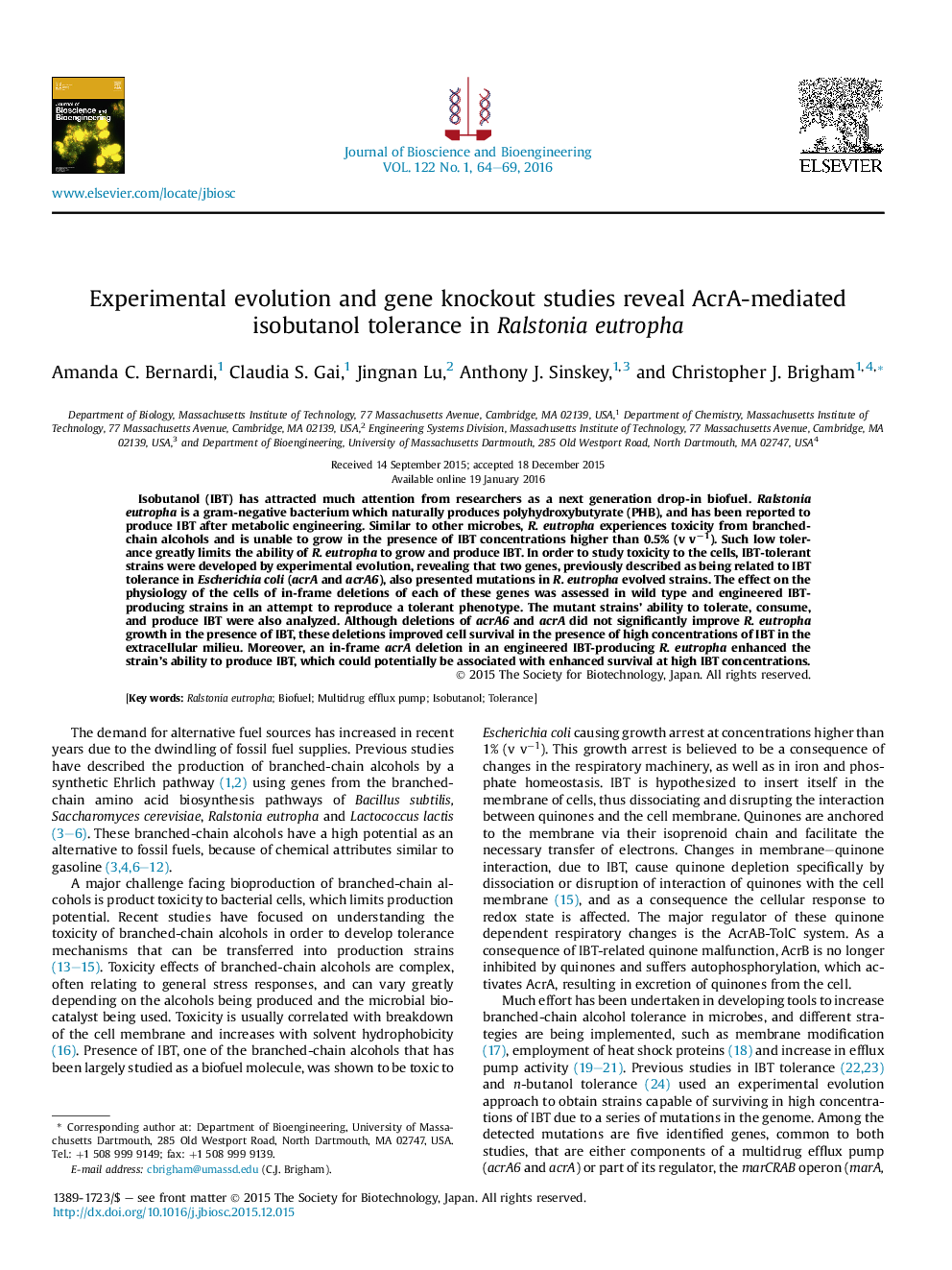| کد مقاله | کد نشریه | سال انتشار | مقاله انگلیسی | نسخه تمام متن |
|---|---|---|---|---|
| 19981 | 43151 | 2016 | 6 صفحه PDF | دانلود رایگان |
Isobutanol (IBT) has attracted much attention from researchers as a next generation drop-in biofuel. Ralstonia eutropha is a gram-negative bacterium which naturally produces polyhydroxybutyrate (PHB), and has been reported to produce IBT after metabolic engineering. Similar to other microbes, R. eutropha experiences toxicity from branched-chain alcohols and is unable to grow in the presence of IBT concentrations higher than 0.5% (v v−1). Such low tolerance greatly limits the ability of R. eutropha to grow and produce IBT. In order to study toxicity to the cells, IBT-tolerant strains were developed by experimental evolution, revealing that two genes, previously described as being related to IBT tolerance in Escherichia coli (acrA and acrA6), also presented mutations in R. eutropha evolved strains. The effect on the physiology of the cells of in-frame deletions of each of these genes was assessed in wild type and engineered IBT-producing strains in an attempt to reproduce a tolerant phenotype. The mutant strains' ability to tolerate, consume, and produce IBT were also analyzed. Although deletions of acrA6 and acrA did not significantly improve R. eutropha growth in the presence of IBT, these deletions improved cell survival in the presence of high concentrations of IBT in the extracellular milieu. Moreover, an in-frame acrA deletion in an engineered IBT-producing R. eutropha enhanced the strain's ability to produce IBT, which could potentially be associated with enhanced survival at high IBT concentrations.
Journal: Journal of Bioscience and Bioengineering - Volume 122, Issue 1, July 2016, Pages 64–69
